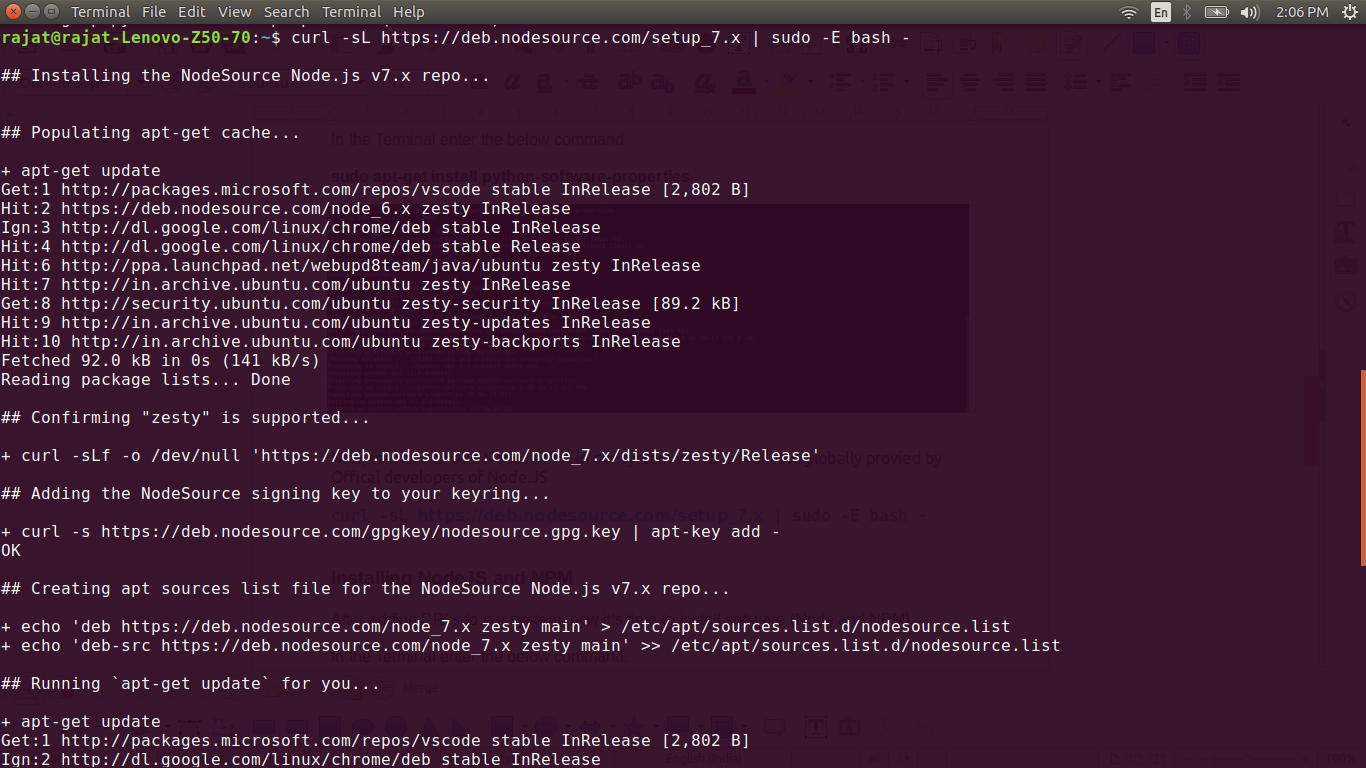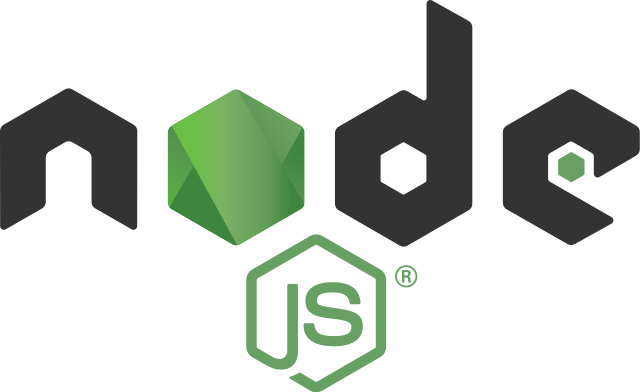Note: The packages on this page are maintained and supported by their respective packagers, not the Node.js core team. Please report any issues you encounter to the package maintainer. If it turns out your issue is a bug in Node.js itself, the maintainer will report the issue upstream.
The build process will use curl-config available on path, if you want to overwrite it to your own libcurl installation one, you can set the curlconfigbin variable, like mentioned above for curlstaticbuild. And if you don't want to use curl-config, you can pass two extra variables to control the build process. Curlincludedirs Space separated list of directories to search for header files. The Node.js snap can currently be installed on Arch Linux, Debian, Fedora, Linux Mint, Manjaro, OpenEmbedded/Yocto, OpernWrt, Solus, Ubuntu and many other distributions built on top these. NodeSource has not tested the Node.js snap on all of these distributions and feedback is welcome in this repository if you run into problems. Curl is a a command line tool that allows to transfer data across the network. It supports lots of protocols out of the box, including HTTP, HTTPS, FTP, FTPS, SFTP, IMAP, SMTP, POP3, and many more. When it comes to debugging network requests, curl is one of the best tools you can find.
Android
Android support is still experimental in Node.js, so precompiled binaries are not yet provided by Node.js developers.
However, there are some third-party solutions. For example, Termux community provides terminal emulator and Linux environment for Android, as well as own package manager and extensive collection of many precompiled applications. This command in Termux app will install the last available Node.js version:
Currently, Termux Node.js binaries are linked against system-icu (depending on libicu package).
Arch Linux
Node.js and npm packages are available in the Community Repository.
CentOS, Fedora and Red Hat Enterprise Linux
Node.js is available as a module called nodejs in CentOS/RHEL 8 and Fedora.
where <stream> corresponds to the major version of Node.js.To see a list of available streams:
For example, to install Node.js 12:

For CentOS/RHEL 7 Node.js is available via Software Collections.
Alternatives
These resources provide packages compatible with CentOS, Fedora, and RHEL.
- Node.js snaps maintained and supported at https://github.com/nodejs/snap
- Node.js binary distributions maintained and supported by NodeSource
Debian and Ubuntu based Linux distributions
Node.js binary distributions are available from NodeSource.
Alternatives
Packages compatible with Debian and Ubuntu based Linux distributions are available via Node.js snaps.
fnm
Fast and simple Node.js version manager built in Rust used to manage multiple released Node.js versions. It allows you to perform operations like install, uninstall, switch Node versions automatically based on the current directory, etc.To install fnm, use this install script.
fnm has cross-platform support (macOS, Windows, Linux) & all poplar shells (Bash, Zsh, Fish, PowerShell, Windows Command Line Prompt)it's built with speed in mind and compatibility support for .node-version and .nvmrc files.
FreeBSD
The most recent release of Node.js is available via the www/node port.
Install a binary package via pkg:
Or compile it on your own using ports:
Gentoo
Node.js is available in the portage tree.
IBM i

LTS versions of Node.js are available from IBM, and are available via the 'yum' package manager. The package name is nodejs followed by the major version number (for instance, nodejs12, nodejs14 etc)
To install Node.js 14.x from the command line, run the following as a user with *ALLOBJ special authority:
Node.js can also be installed with the IBM i Access Client Solutions product. See this support document for more details
macOS
Download the macOS Installer directly from the nodejs.org web site.
If you want to download the package with bash:
Nodejs Cursorto
Alternatives
Using Homebrew:
Using MacPorts:
Using pkgsrc:
Install the binary package:
Or build manually from pkgsrc:
n
n is a simple to use Node.js version manager for Mac and Linux. Specify the target version to install using a rich syntax,or select from a menu of previously downloaded versions. The versions are installed system-wide or user-wide, and for moretargeted use you can run a version directly from the cached downloads.
Nodejs Crlf
See the homepage for install methods (boostrap, npm, Homebrew, third-party), and all the usage details.

If you already have npm then installing n and then the newest LTS node version is as simple as:
NetBSD
Node.js is available in the pkgsrc tree:
Or install a binary package (if available for your platform) using pkgin:
Nodenv
nodenv is a lightweight node version manager, similar to nvm. It's simple and predictable. A rich plugin ecosystem lets you tailor it to suit your needs. Use nodenv to pick a Node version for your application and guarantee that your development environment matches production.
Nodenv installation instructions are maintained on its Github page. Please visit that page to ensure you're following the latest version of the installation steps.
nvm
Node Version Manager is a bash script used to manage multiple released Node.js versions. It allowsyou to perform operations like install, uninstall, switch version, etc.To install nvm, use this install script.
On Unix / OS X systems Node.js built from source can be installed usingnvm by installing into the location that nvm expects:
After this you can use nvm to switch between released versions and versionsbuilt from source.For example, if the version of Node.js is v8.0.0-pre:
Once the official release is out you will want to uninstall the version builtfrom source:
OpenBSD
Npm Curl
Node.js is available through the ports system.
Using pkg_add on OpenBSD:
openSUSE and SLE
Node.js is available in the main repositories under the following packages:
- openSUSE Leap 42.2:
nodejs4 - openSUSE Leap 42.3:
nodejs4,nodejs6 - openSUSE Tumbleweed:
nodejs4,nodejs6,nodejs8 - SUSE Linux Enterprise Server (SLES) 12:
nodejs4,nodejs6(The 'Web and Scripting Module' must be added before installing.)
For example, to install Node.js 4.x on openSUSE Leap 42.2, run the following as root:
SmartOS and illumos
SmartOS images come with pkgsrc pre-installed. On other illumos distributions, first install pkgsrc, then you may install the binary package as normal:
Or build manually from pkgsrc:
Snap
Node.js snaps are available as node on the Snap store.
Node Js Curl
Solus
Solus provides Node.js in its main repository.
Void Linux
Void Linux ships Node.js stable in the main repository.
Windows
Download the Windows Installer directly from the nodejs.org web site.
Alternatives
Using Chocolatey:
Using Scoop:
z/OS
IBM® SDK for Node.js - z/OS® is available in two installation formats,SMP/E and PAX. Select the installation format that applies to you:
If you are familiar with Curl, the command line tool for transferring data with URL syntax, you might wonder how can that be done with NodeJS. Well, looking at the nodeJS API, it’s clear that HTTP.request gives you something that looks like a Curl equivalent. But, I want to write the response to a file and do some looping so that I can use an array of URLs instead of just making a request to one URL.
Looking around, I found a great nodeJS module called request which is a small abstraction on top of http.request and makes writing my script much easier. First, I added the request and filesystem module to my script plus the array of URLs I want to scrape. Then I did a for-loop to iterate through the array and inside the loop, I put the request function, passing the file and url parameters, and some console.log() calls to print what’s happening:
As you can see from the output, only the second url and file was scraped. This is because, in NodeJS, everything is asynchronous, so we need to pass the url and file from the loop to a separate function:
Another good nodeJS module for doing curl like web scraping is curlrequest. Of course, for some serious web scraping, I recommend using PhantomJS.
